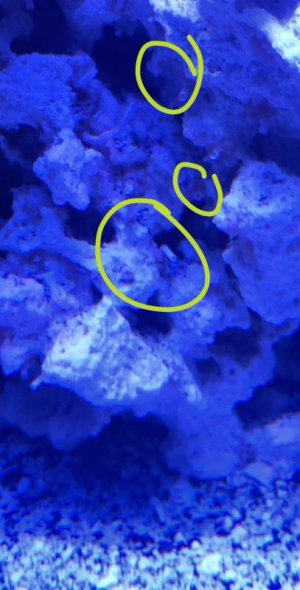Hey all,
I am jumping back into the hobby after about 3 years with my 90 gallon. in the process of learning everything again while my tank touch the 4 week mark during its cycle, I am a little thrown off by the water parameters. I took my water to my LFS and he said:
Ammonia is 0 (tested with API)
Nitrite is 0 (tested with API)
Alkalinity is 20 (tested with API)
Testing my water at home I got current readings
Ammonia is 0 (tested with API)
Nitrite is between 1.0 and 2.0 (tested with API)
Alkalinity is 7.6 dkh (test with Red Sea)
I am using RO/DI water mixed with Red Sea Coral pro salt. The rock was rock work I used in the tank before I did not scrub it or clean it off. Just left it in the tank after draining the water 3 years ago. Refilled the tank and left all the rock work in place.
He wasn't too friendly and seemed not to want to speak much. So I don't know how he got such high results with alkalinity in the tank when I did not add anything.
I also asked him about these little tube like straws I see growing out of the rocks and his answer to me was "because my alkalinity is so high and to do a water change because my rocks may be carrying the high alkalinity"
So my questions are:
what are tube straw like things and what causes them?
And as far as alkalinity should it be having such a huge change from what is provided by the salt mix when there is nothing consuming the alkalinity or no additives being provided?
I know it seems like a lot silly questions but whatever help I can get to make sense of what's going on will help a lot.
Thanks
I am jumping back into the hobby after about 3 years with my 90 gallon. in the process of learning everything again while my tank touch the 4 week mark during its cycle, I am a little thrown off by the water parameters. I took my water to my LFS and he said:
Ammonia is 0 (tested with API)
Nitrite is 0 (tested with API)
Alkalinity is 20 (tested with API)
Testing my water at home I got current readings
Ammonia is 0 (tested with API)
Nitrite is between 1.0 and 2.0 (tested with API)
Alkalinity is 7.6 dkh (test with Red Sea)
I am using RO/DI water mixed with Red Sea Coral pro salt. The rock was rock work I used in the tank before I did not scrub it or clean it off. Just left it in the tank after draining the water 3 years ago. Refilled the tank and left all the rock work in place.
He wasn't too friendly and seemed not to want to speak much. So I don't know how he got such high results with alkalinity in the tank when I did not add anything.
I also asked him about these little tube like straws I see growing out of the rocks and his answer to me was "because my alkalinity is so high and to do a water change because my rocks may be carrying the high alkalinity"
So my questions are:
what are tube straw like things and what causes them?
And as far as alkalinity should it be having such a huge change from what is provided by the salt mix when there is nothing consuming the alkalinity or no additives being provided?
I know it seems like a lot silly questions but whatever help I can get to make sense of what's going on will help a lot.
Thanks

